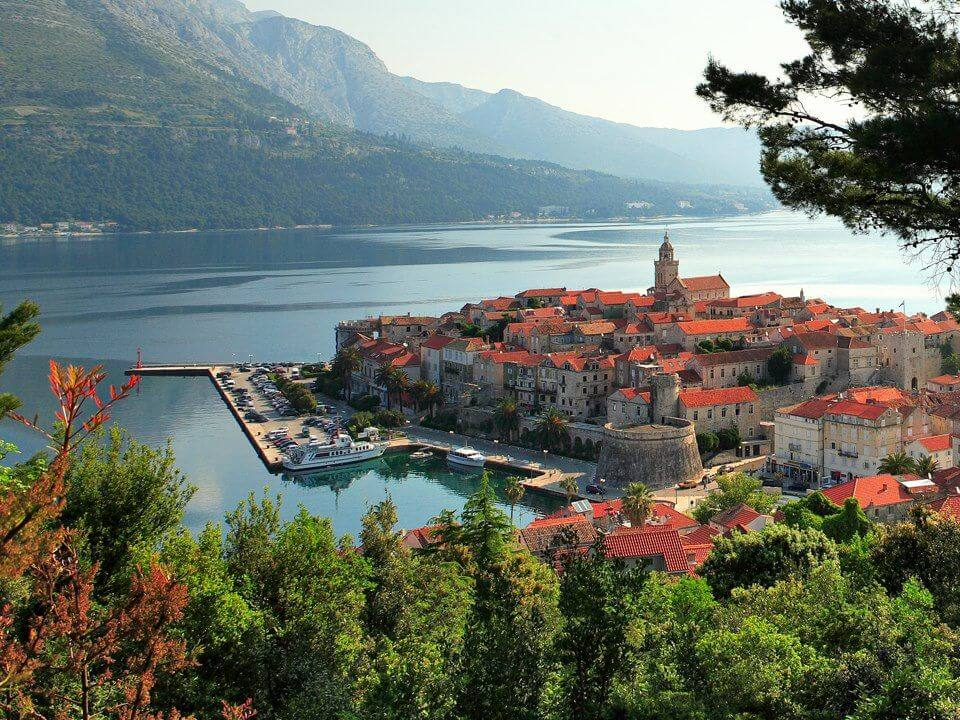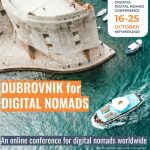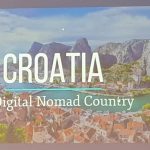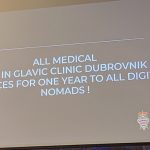(This article is sponsored by the City of Dubrovnik and Dubrovnik Tourist Board.)
There are just six days to go until applications close for the Dubrovnik DN-i-R competition, the first of its kind in the world. Ten lucky winners, to be announced on TCN on April 5, will be guests of the city of Dubrovnik for four weeks from April 23. The Dubrovnik DN-i-R programme will be the first such cooperation between a destination and resident digital nomads, working together to develop the destination’s strategy for its digital nomad offer.
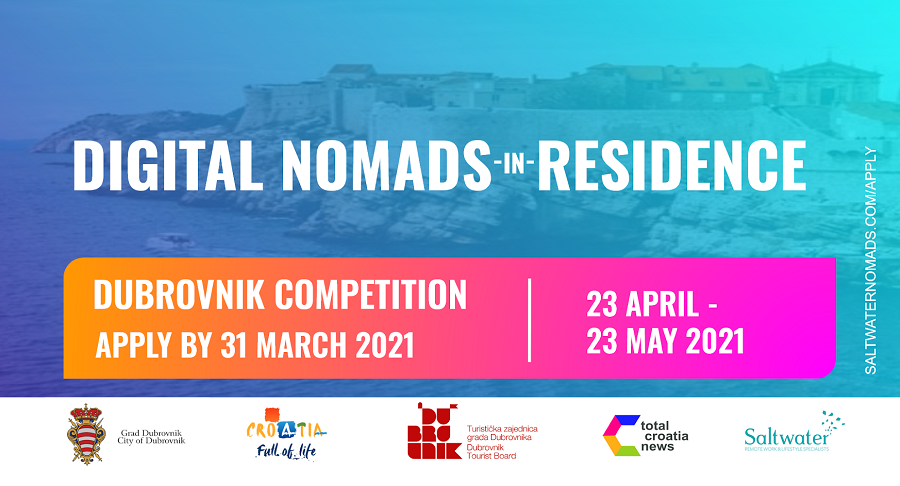
The concept, developed and implemented by Saltwater Nomads, is a collaboration with the City of Dubrovnik, Dubrovnik Tourist Board, and the Croatian National Tourist Board, with media support from TCN.
In addition to the free accommodation, specialised workshops and other activities, Dubrovnik’s ten remote-working guests will be taken around the region to explore some of the magic of Dubrovnik, both inside – but especially outside – its city walls.
I always find it amusing to hear tourists complaining that there is nothing to do in Dubrovnik once you have been around the old town. Nothing could be further from the truth! Add Dubrovnik, the city, to Dubrovnik, the region, and you have a quite sensational offer. And that is before you consider the gems right across international borders, such as the UNESCO World Heritage Sites of Mostar in Bosnia and Hercegovina and Kotor in Montenegro.
Considering applying but not yet convinced? Perhaps this official overview of the excursions will help persuade you. You can find out more about the application process here.
1 – Tour of Dubrovnik Old Town
– sightseeing tour of the Old City of Dubrovnik and the city walls with the local guide – organized by Dubrovnik Tourist Board
Learn more about Dubrovnik on the official Dubrovnik Tourism Board website.
2 – Korcula
– a weekend trip to Korcula island (sightseeing tour of the Old City of Korcula – birthplace of Marco Polo; hiking /cycling from town Korcula to Lumbarda, winery visit; visiting other places on the island – Blato, Vela Luka…) – organized by Korcula Tourist Board
Korčula – this central Dalmatian island stretches out parallel to the nearby mainland in a west-east direction. The island is 46.8 km in length, with an average width of 5.3 to 7.8 kilometres and a surface area of 270 km2, making it the sixth-largest island in the Adriatic Sea. It is separated from the Pelješac peninsula by the Pelješac Channel, only 1270 m wide at its narrowest point. The island of Korčula is indented with a series of bays and coves. Exploring the island only adds to its natural beauty: every part of it is worth exploring. Near the city of Korčula is an archipelago of twenty uninhabited islands covered in dense macchia thickets and accessible coastline: on some, the smooth stone slabs along the shore are perfect for sunbathing. The island of Korčula has been inhabited since prehistoric times, with past traces of life being uncovered at many places on the island. The oldest finds were stone knives from the Neolithic age discovered on the islet of Badija near Korčula. The site with the richest Neolithic age finds is Vela spilja (Large Cave) at Vela Luka.
Learn more about the incredible island of Korcula.
3 – Mljet
-a weekend trip to Mljet island – one of the 8 national parks of Croatia (active tour of the island – cycling, hiking, kayaking, visit of the national park and 2 saltwater lakes, boatride to the Odysseus cave…) – organized by Mljet Tourist Board
Mljet – the first large island we come upon while sailing the from the southeast in Croatian waters. In historical times, the entire island was inhabited by the Illyrians. The Greeks, on their way to Lumbarda (island of Korčula) and other Adriatic settlements arrived there and stayed due to the water and bad weather. The island was also inhabited by the Romans, who left behind archaeological remnants, the most significant of which is the palace in Polače harbor, as well as the names of the island heights, hills and reefs, unquestionable proof of their residence on the island. Mljet is Croatia’s greenest island with lush Mediterranean vegetation, clear and clean sea, a gentle, sandy shoreline and a wealth of underwater sea life. This island is well known for its southern sorts of white and red wine, which receive a special flavour and aroma from the sun and the specific Mljet soil. The island is also well known for its goat’s cheese and honey which, in the past, was served in the emperor’s courts, and mostly for the warmness with which the islanders greet visitors to their island.
Learn more on the official Mljet Tourist Board website.
4 – Konavle
– one-day excursion to Konavle area (sightseeing of the town Cavtat, museum in the village Cilipi, Old watermill in village Ljuta and some other sights and villages). – organized by Cavtat Konavle Tourist Board
Konavle is a region with particular natural beauties and contrasts: mountain and valley, green hills and naked stone, the blue and the green or, as called by the inhabitants of Konavle, “Gornja” and “Donja Banda”. Fringed by the Konavle mountains in the North, bordered by the Adriatic Sea in the South, it reaches from the entry into the Bay of Kotor to the peninsula of Prevlaka in the East, and in the West, it inclines down to the cosy coves of Obod and Cavtat. The preserved natural, unique and exceptionally precious rural architecture, numerous monuments of the thousand-year-old history of this area, traditions that are hundreds of years old and have been kept through folklore, the distinctive traditional costumes of Konavle and the Konavle embroidery, the harmony of man’s life and nature …all this renders Konavle unique and recognisable.
Learn more on the official Cavtat Konavle Tourist Board website.
5 – Primorje
– one-day excursion to Dubrovnik Primorje area (visit of town Slano, the Rector’s palace, villages up the hills…) – organized by Dubrovacko Primorje Tourist Board
The Coast of Dubrovnik is a gentle region of olive groves and vineyards, with an indented shore and lavish vegetation… Slano is the biggest and most important small town and a community centre. Traditionally, the villages in the immediate hinterland are municipally linked to it, forming a constituent part of the Community of the Dubrovnik Coast. Slano is 30 kilometres from the centre of Dubrovnik. It is situated in a spacious and beautiful bay of the same name, which was a flooded valley, next to the walled shoreline, opposite the island of Šipan and divided by the Koločep Channel. Slano is attractive due to its numerous pebble beaches, lush vegetation and pleasant climate.
The bay is protected from the wind, so that it is an ideal haven and anchorage for ships, boats and yachts. Its economy is based on tourism with accommodation provided by the hotels “Admiral” and “Osmine”, private pensions, apartments, campsites and other venues; also on agriculture (olives, vines, fruit), fishing and other marine activities.
Learn more on the official Slano Tourist Board website.
The final date for applications is March 31, so there is still time. It is going to be a fantastic 4 weeks in a dream destination. Full details on the competition, rules and application process on the Saltwater Nomads website.
Learn more about the programme in this in-depth interview with its creator, Saltwater Nomads CEO Tanja Polegubic.
The Mayor of Dubrovnik, Mato Frankovic, has been heavily involved in the city’s Dubrovnik digital nomad initiative from the start. Mayor Frankovic talks about this, as well as other tourist topics, in this recent TCN interview.

